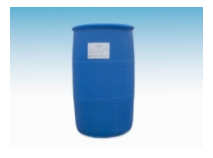Function and application of surfactants.
1) Solubilization of nonpolar molecules in the core of micelles. Non-polar organic compounds, such as saturated aliphatic hydrocarbons, naphthenes and benzene, which are not easy to polarize, are generally added to the core of micelles, just as they are dissolved in non-polar hydrocarbon liquids. Ultraviolet or nuclear magnetic resonance spectra show that the solutes are in a non-polar environment. X-ray shows that the micelles become larger after solvation.

2) Intermolecular solubilization of surfactants: For polar organic compounds with similar molecular structure to surfactants, such as long-chain alcohols, ammonia, fatty acids and polar dyes, the micelles are solubilized between the barriers of micelles, and the micelles do not become larger after solubilization.
3) Adsorption and solubilization on the surface of micelles, that is, adsorption and solubilization. It is the solubilization of small molecular polar organic compounds on micelle surface, which are neither soluble in water nor in non-polar hydrocarbons.
4) Solubilization between polyoxyethylene chains: Non-ionic surfactants with polyoxyethylene as hydrophilic group usually encapsulate solubilizers in polyoxyethylene chains outside micelles.
Carbon black is an important raw material for chemical industry. It has excellent reinforcing, coloring, light resistance, antistatic and ultraviolet resistance. It is rich in sources and cheap. It has been widely used in rubber, plastics, ink, coatings, dry batteries and chemical fibers and many other industries.
Non-ionic surfactants have excellent electrolyte resistance, hard water resistance, and good compatibility with other types of surfactants. They have been widely used to improve the stability of dispersion systems. At present, carbon black is mainly used in non-aqueous systems, such as inks and oily coatings. As the world increasingly sees and protects the environment, more and more studies have focused on carbon black water dispersions.
Nonionic surfactants do not produce ionic surfactants in aqueous solutions. The solubility of non-ionic surfactants in water is due to the strong hydrophilic functional groups in molecules. The number of non-ionic surfactants is second only to that of anionic surfactants. It is an important type of widely used surfactants. With the development of petroleum industry, the cost of ethylene oxide used as raw material is decreasing, and its output will continue to increase.